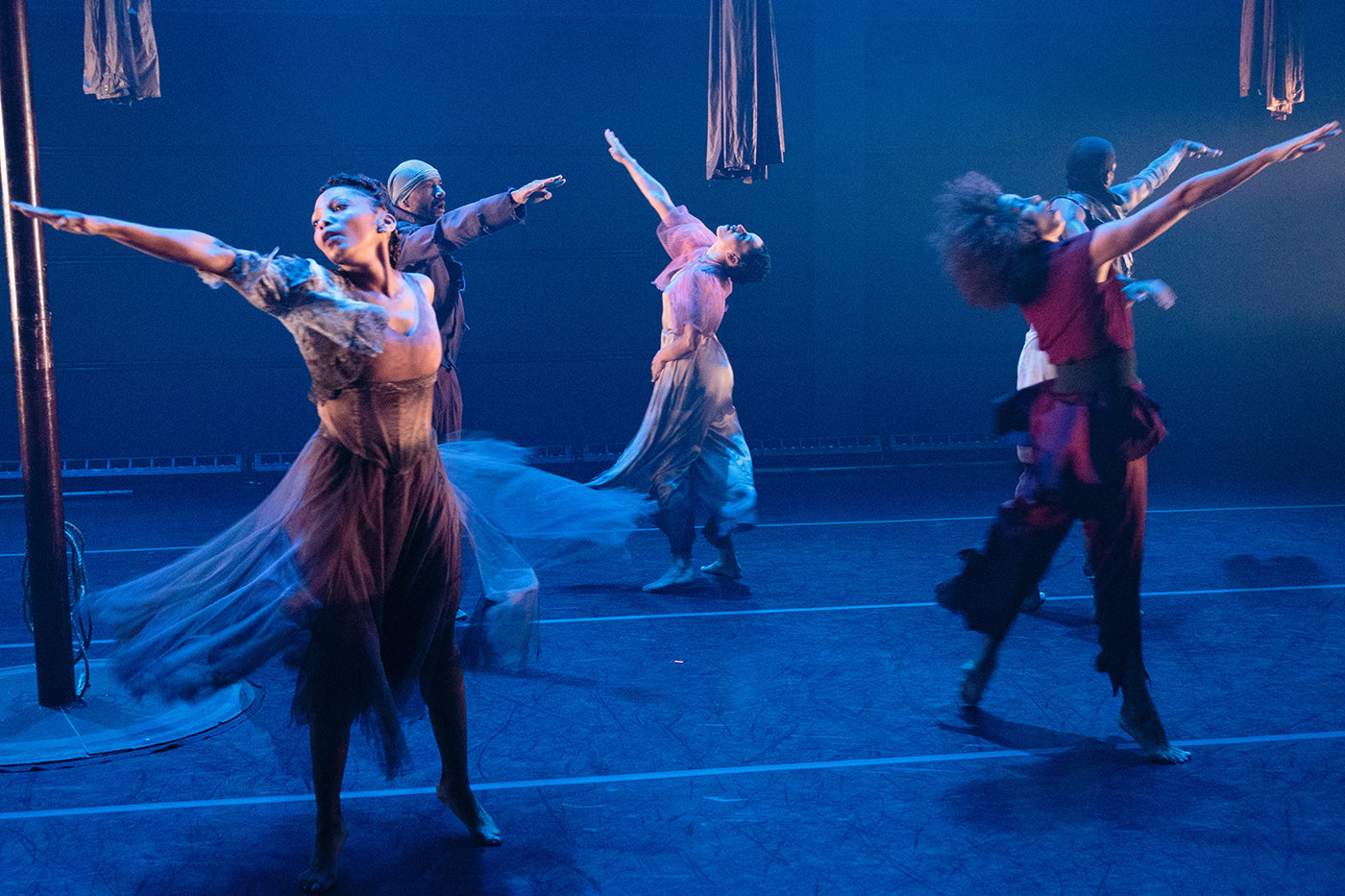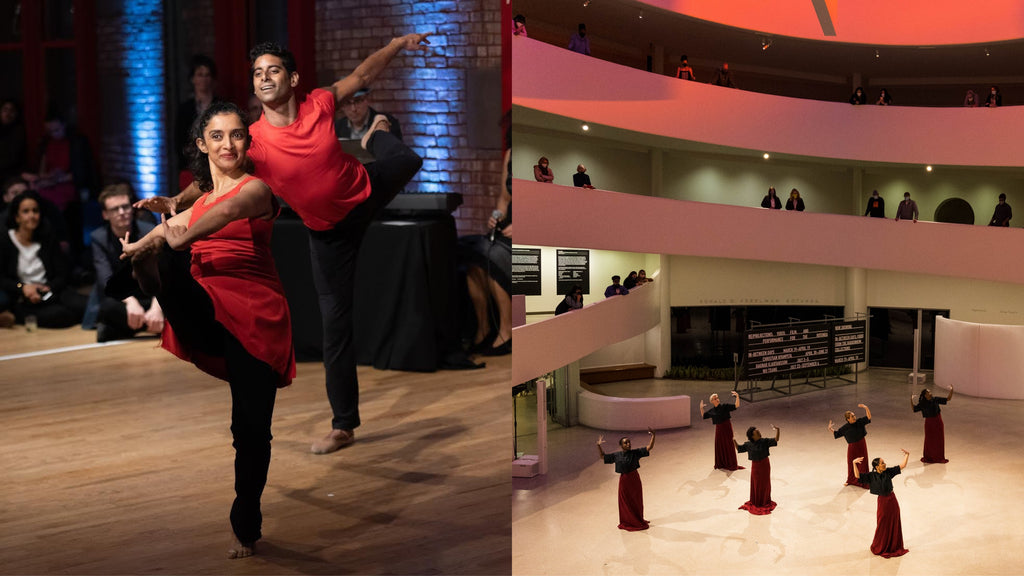An excerpt opens with Vasudevan dancing a section of percussive Bharatanatyam footwork. Ramasar enters from the opposite side with a balletic walk and meets up with Vasudevan taking a classical pose. They dance together using mostly a balletic contemporary vocabulary that occasionally veers into Bharatanatyam—all of it energized by a piano score that incorporates the initial rhythm slapped onto the floor with Vasudevan’s footwork. A contrasting section has Vasudevan positioned directly behind Ramasar. We see nothing of her body except for her arms wrapped around his chest. Ramasar mimes a series of facial expressions as Vasudevan gestures a correlated choreography of mudras at his heart. They eventually dance together and conclude walking upstage together arm-in-arm with their heads bobbing.
The final evening of the festival was dedicated to the intersection of dance and law enforcement. Some may recall the lively tradition of performance on New York City subway platforms. Street and subway performance has provided opportunities for many early career performers to hone their craft, perform, and earn. With variable interpretation and enforcement of the city’s public performance laws, there is always the possibility of confrontation and arrest. These stories form the point of departure for “Caged Birds,” a project in its early stages by performer/documentarian Kash Gaines and his cast of performing artists.
The work makes an impactful start as six dancers, wearing orange jumpsuits and handcuffs, procession about the stage in a stylized walk with heads bowed and wrists pinned together in front of their bodies. After they strip out of the jumpsuits and reveal their black sweats and t-shirts, they perform solos and group scenes showcasing their street dance chops while narrating intimate stories of perilous encounters with law enforcement. Some scenes employ video footage projected onto the backdrop. But the ones that make the strongest impression are those that focus on well-crafted movement in relationship to the spoken narrative. The stories opened my eyes as they broke my heart.
The festival concluded with “The Reckoning,” choreographer and director Francesca Harper’s response to the 2010 killing of seven-year-old Aiyana Mo'Nay Stanley-Jones at the hands of Detroit law enforcement. The work, a collaboration between Harper and composer Nona Hendryx, crafts an expressive record of injustice and brutality against bodies of color. Originally created as a film commissioned by Array’s Law Enforcement Accountability Project (developed by writer, director, and producer Ava DuVernay and founded by Array Alliance, to pursue narrative change around the police abuse of Black people), the work now has a second life as a live dance performance incorporating projected clips from the film. The balletic contemporary choreography, costumes by Elias Gurrola, and sensitive dancing with well-drawn characterization by the dancers from Ailey II and Francesca Harper’s FHP Collective give a nuanced portrait of the painful incident.
All the works presented provoke and inspire conversations of this moment and are beacons of promise. Thank you to Works & Process for creating the space for dancers and dancemakers to breathe, collaborate, and grow the garden.










comments